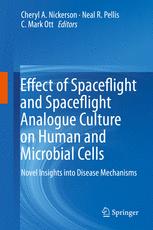

Most ebook files are in PDF format, so you can easily read them using various software such as Foxit Reader or directly on the Google Chrome browser.
Some ebook files are released by publishers in other formats such as .awz, .mobi, .epub, .fb2, etc. You may need to install specific software to read these formats on mobile/PC, such as Calibre.
Please read the tutorial at this link: https://ebookbell.com/faq
We offer FREE conversion to the popular formats you request; however, this may take some time. Therefore, right after payment, please email us, and we will try to provide the service as quickly as possible.
For some exceptional file formats or broken links (if any), please refrain from opening any disputes. Instead, email us first, and we will try to assist within a maximum of 6 hours.
EbookBell Team

4.4
22 reviewsMany breakthroughs in biological research and translational healthcare advancements have been achieved by studying the response of biological systems to extreme environments. The spaceflight platform provides a unique environment where researchers can explore fundamental questions into cellular and molecular response mechanisms to unveil novel insight into human health and disease. Since the physical force of gravity has shaped the architecture of all biological systems on our planet, spaceflight provides the opportunity to see life in a new adaptational mode - in response to reduced gravity. This enables investigations into the effects of the microgravity environment and associated changes in mechanical forces on mammalian cells/tissues and microbial pathogens, to bring novel insight into disease mechanisms, which are not discernable using conventional experimental approaches.
Research using spaceflight platforms represents a paradigm shift in how we observe life processes and is on the leading edge of research discoveries into cellular and molecular mechanisms of health and disease. By incorporating the views of leading authors, this book highlights landmark discoveries and advances in mammalian cellular and microbiology research in both true spaceflight and ground-based spaceflight analogue environments for scientists and students alike who are interested in the influence of physical forces on mammalian and microbial cells, how this impacts transition between normal homeostasis and disease, and basic mechanisms of adaptation to low gravity environments. To provide a thorough understanding of this research, this book covers a range of topics including:
(i) description the physical forces interacting with cells in microgravity and microgravity analogue environments,
(ii) how alterations in these cellular forces impact human physiology, specifically immune function,
(iii) use of these environments to develop organotypic three-dimensional (3-D) tissue culture models as predictive human surrogates for organogenesis and disease research, and
(iv) microbial pathogen responses to culture in these environments, focusing on infectious disease
Collectively, this information reflects a critical step in preparation for long-duration human space exploration, advances our knowledge of basic biological processes and mechanisms important to understand normal function and disease, and may lead to new strategies for treatment and prevention.